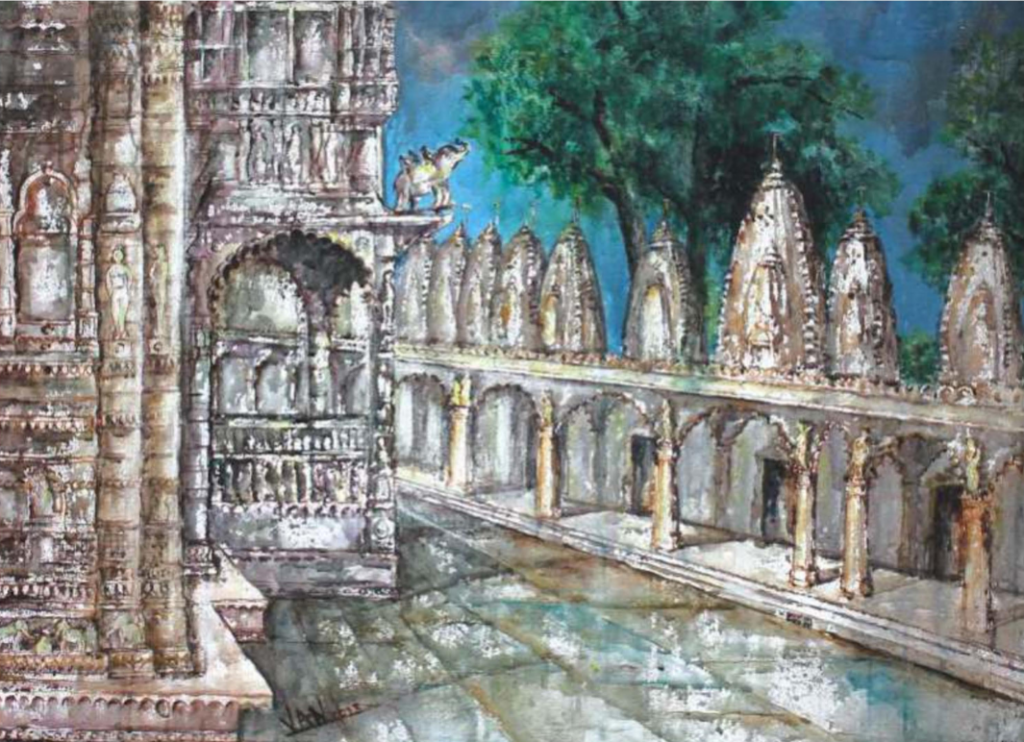~John Lautner As architects, we are often tasked with answering the age-old question: is architecture art, science, or utility? Lautner’s words answer this not just philosophically, but passionately asserting that architecture, in its truest and most meaningful form, is art. And not just any art but one that lives, breathes, evolves, and responds. This perspective …

~John Lautner
As architects, we are often tasked with answering the age-old question: is architecture art, science, or utility? Lautner’s words answer this not just philosophically, but passionately asserting that architecture, in its truest and most meaningful form, is art. And not just any art but one that lives, breathes, evolves, and responds.
This perspective is more than romantic idealism; it’s a radical call to remember the soul of architecture in a world where buildings often serve function more than feeling, profit more than purpose. From the vantage point of an architect, this quote opens up a deep conversation about what makes architecture meaningful and how we, as creators of space, can infuse life into the built environment.
Architecture as Art
To understand the depth of Lautner’s philosophy, one must first accept the premise: architecture is an art. Not in the decorative sense, like painting patterns on a wall, but in the profound, existential way that art reflects the human condition, evokes emotion, tells stories, and makes us feel alive.
Art is not simply what is seen it is what is experienced. Similarly, architecture cannot be reduced to its blueprint or structural integrity; it must be felt. A home isn’t just a roof over one’s head it is safety, memory, belonging. A temple is not just a structure it is spirit and devotion cast into form. A city plaza is not only a void in a grid it is where stories unfold, people meet, protests rise, and children play.
When Lautner calls architecture “alive,” he aligns it with the very nature of art: it must move, resonate, and affect.
The Living Quality of Architecture
But what does it mean for architecture to be alive? It’s a poetic metaphor, yes but it is also architectural truth.
To say that a structure is alive does not mean it has veins or breath, but rather, that it responds to its environment, its occupants, and its time. It is not static, even if it stands still. It may be:
- Responsive to climate—with dynamic facades or passive design principles.
- Culturally rooted—speaking the language of the place and people it belongs to.
- Emotionally intelligent—evoking awe, comfort, solemnity, or joy.
- Temporal and evolving—adapting to changes in use, aging gracefully, and carrying memory.
A building becomes alive when it engages in a relationship with those who use it. It is not a mute container; it is a silent partner in everyday life.
Consider falling asleep under a skylight that changes with the seasons, or the way sunlight pours across a breakfast nook in the morning. These are architectural details, yes but more importantly, they are human moments. The architecture is alive because it creates moments that are lived.
Dead Architecture: A Cautionary Tale
If living architecture is art, then dead architecture is well, the opposite. Lautner draws a stark line here if it’s not alive, it’s not art. And if it’s not art, it isn’t truly architecture.
This brings us to a subtle but significant distinction: building vs. architecture.
There are countless structures in the world that fulfill a functional need but are devoid of soul soulless corporate boxes, sterile public housing, shopping malls designed by algorithms rather than architects. These may stand, shelter, even thrive economically. But they do not speak. They do not feel. They are dead.
And dead architecture isn’t just uninspiring it’s dangerous. It breeds alienation. It contributes to urban decay. It dulls the senses. It teaches us, subtly, to expect less from our surroundings and by extension, from life itself.
As architects, our greatest risk is not designing poorly, but designing indifferently. Dead architecture is often the result of systems where efficiency replaces empathy, profit replaces poetics, and checklists replace curiosity.
Lautner’s quote reminds us that good design cannot happen without emotion. A structure must be birthed with intent, nurtured with integrity, and animated by the lives it supports.
Designing for Life
So how do we design buildings that are alive? What gives architecture that elusive heartbeat?
Let’s explore some of the qualities that breathe life into built form:
1. Sensory Experience
Great architecture engages all the senses not just the eyes. The smell of wood in a temple. The texture of stone underfoot. The acoustics of a vaulted ceiling. These are not incidental they are intentional.
Peter Zumthor once said, “Architecture is not about form, but about feeling.” Lautner would agree. Feeling is what makes a space alive.
2. Human Scale and Empathy
Alive architecture is rooted in the human body. The proportions feel right. The corners invite you. The windows frame nature or street life.
Contrast this with buildings that intimidate or alienate. A skyscraper that ignores pedestrians is not alive it looms, but does not live.
3. Dialogue with Nature
Lautner himself was a master of integrating architecture with nature. His homes didn’t fight the landscape they flowed with it.
Architecture that is alive does not isolate itself from nature it opens up to it. It uses natural light, ventilation, views, and materials as part of the design DNA.
4. Adaptability and Evolution
A living building changes with time. It allows for new occupants, uses, and technologies.
In contrast, dead architecture is rigid. It resists change and demands demolition when it no longer serves.
5. Storytelling and Meaning
Every alive space tells a story of its place, its people, or its purpose. Whether it’s a mosque echoing centuries of prayer, or a home carrying childhood laughter in its walls these stories make architecture more than construction. They make it culture.
6. Emotive Design
Emotion in architecture is not sentimental it’s foundational. Think of how a cathedral stirs awe. Or how a cabin in the woods offers comfort.
Architecture that is alive gives form to feeling. It is a poem in concrete, a sonata in brick.
Lautner’s Legacy: The Organic Soul of Architecture
John Lautner’s own work is perhaps the best commentary on his quote. His structures like the Chemosphere, Elrod House, or the Sheats-Goldstein Residence are expressions of living architecture. They are bold, organic, deeply human.
His forms flow with the terrain. His materials reflect their era without being bound by it. His buildings feel often more than they “function” in conventional terms.
He didn’t care much for commercialism or conformity. He wanted to design buildings that changed the way people lived and felt.
And that’s the heart of this quote.
Lautner isn’t just describing a design philosophy he’s making a moral claim: architecture must be alive because people are alive. To design lifelessly is to betray the living.
Architecture as a Mirror of the Soul
As architects, our task is not just to build it is to interpret life through form. We are translators between the intangible and the tangible. The emotions of a family, the energy of a city, the silence of a forest we must give these things walls, windows, thresholds, and shadows.
This is not easy. Nor is it always rewarded in today’s fast-paced, cost-driven industry. But it is necessary.
Alive architecture may not always win awards or optimize square footage. But it will be remembered. It will be loved. It will endure.
Because it is art.
Because it is alive.
Conclusion: Designing with Vitality
In closing, Lautner’s quote serves as a powerful reminder for every architect, student, and designer: do not design dead things.
Make spaces that feel. That listen. That breathe. That remember. That dance with light. That hold people not just physically, but emotionally.
Architecture is more than utility it is memory, identity, experience. And all of these are alive.
As architects, we have the privilege and the responsibility to make that aliveness visible.
So, the next time you sit at your drawing board or open a CAD file, ask yourself:
Does this feel alive?
If not start again.
Because if it’s not alive, it’s not art. And if it’s not art, it’s not architecture.





